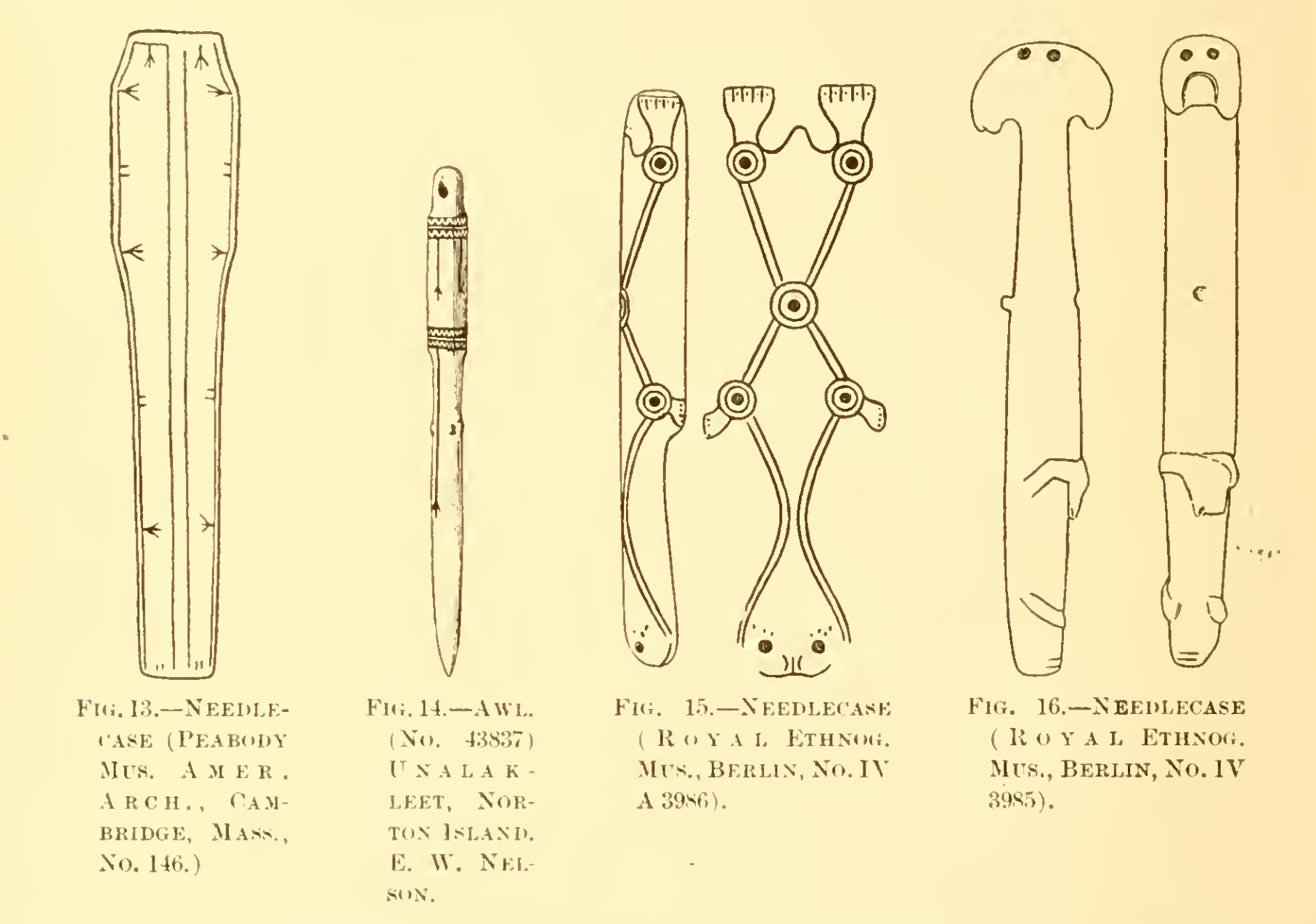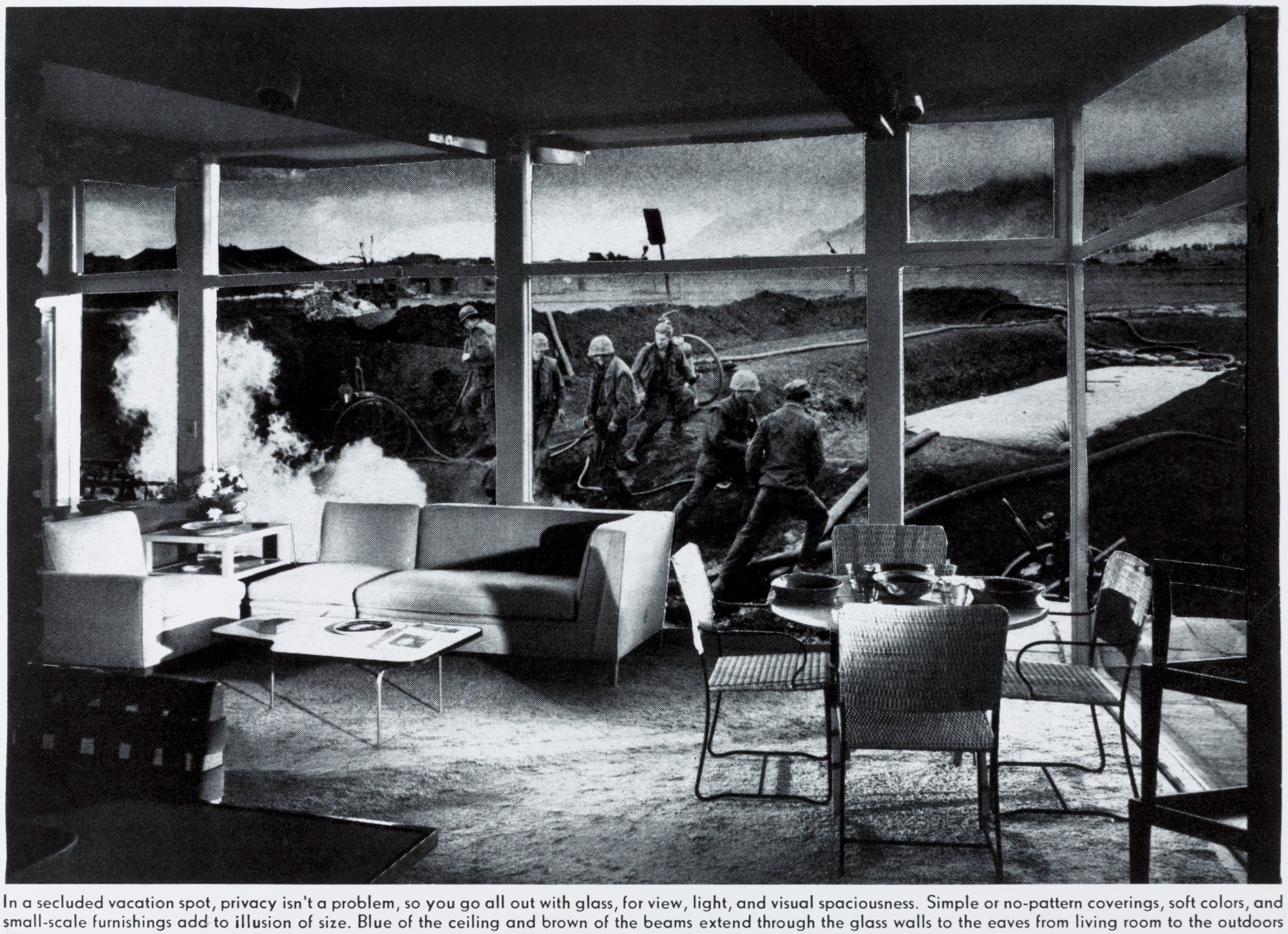Decorative Designs of Alaskan Needlecases
(note: this essay is a response to "Decorative Designs of Alaskan Needlecases: A Study in the History of Conventional Designs, Based on Materials in the U.S. National Museum" by Franz Boaz)
In a Boasian attempt at clarification (if not classification) of Alaskan needlecases, we are presented with an immense amount of information regarding the more formal aspects of the objects themselves. These “descriptions” (for lack of a better word) center on the various degrees of manipulation upon the surface of the object, which when read in whole, illustrate to the reader the degrees of variation and similarity between needlecases from various Alaskan artists.
Contrary to typical approaches regarding the organization of objects, Boas seeks to illustrate the near impossibility (or futility) of grouping the needlecases into cultural categories. Attempts to do so, Boas argues, fail to account for the needlecase’s “multifarious forms” – though such an approach does aid in explaining the idea of a “fixed conventional form” from which the makers of these objects seem to, at least initially, draw upon.
This is an interesting conundrum, in that Boas freely admits that the origin of the base-object (in this instance, the needlecase with its requisite flanges and parallel lines) is “obscure” to us – interesting specifically because of Boas’ acknowledgement. By accepting this unknown, we can (as Boas does) leave the base-object alone and begin to investigate the variable, “decorative” elements (i.e., animal heads, differing placements of parallel lines, etc.). And it is here that Boas finds a most acceptable answer: the slight variations in form can only be accounted for by recognizing “the play of imagination under the restricting influence of a fixed conventional style.” In other words, the mark of the artist imparting his or her own hand upon the standard structure of the base-object.
There is, however, a binary aspect to the needlecase that requires further examination. The base-object, of “obscure” origin, can be (and by Boas, is) addressed as a “conventional figure.” At the other end, the “decorative” character of the needlecase can be termed a “realistic figure” due to the way in which the increased degree of formal manipulation upon the needlecase has moved toward the direction of realistic images of animals and, in a few cases, even people.

Needlecase diagram from "Decorative Designs of Alaskan Needlecases," page 336
It would be easy to view the different variations of needlecase as a type of evolution of the object, moving from the conventional base-object toward the more decorative realistically-figured object. This, Boas states, would be incorrect. Such a “genetic” reading would entail using a system of organization, or principle, which “has nothing to do with the principle of our classification.” This harkens back to the Boasian methodology at odds with the classificatory systems of the time, wherein objects were viewed and studied at various degrees of removal from their use-context.
At that time, the prevalent direction of the anthropological museum (as well as many others) was one which steered the viewer of collections of cultural artifacts toward a non-contextual, non-historical, similarity-based system of understanding – a flawed attempt to understand both the objects and the people who used them, while presenting only the objects without any context other than the similarities between types of “things.”
In what might seem a Kantian model of immanent criticism, or better, a Greenbergian “art for art’s sake” approach to the organization and classification of objects, the pre-Boas era of anthropology allowed for a very limited understanding objects. By organizing knives, bowls or needlecases according to knives, bowls or needlecases, the discussion of these objects could only function within those terms – a kind of “object for object’s sake” – wherein any discussion outside formal terms was denied. “Similarities,” says Boas, do not represent “an historical sequence.”
The idea that neither the conventional nor realistic design can adequately claim historical precedence is important not only because it disallows a classificatory system based simply on visual similarities in form, but because it further reinforces the idea of individual-based, artistically created variations in design – of the Alaskan needlecase maker as artist. This idea is paramount in deconstructing the notion that “art” and “artists” are purely Western traditions and ideals.
Can this methodology be used to examine the way Modern Art has been (and continues to be) displayed? One of the most recognized Modern Art institutions, the Museum of Modern Art in New York, organizes their collection according to “Curatorial Departments”: “Architecture and Design;” “Drawings;” “Film and Media;” “Painting and Sculpture;” “Photography;” and “Prints and Illustrated Books.” Certainly this is, for Boas, a bad sign. The implication that disciplines are the first, and best, demarcation of works of art is reminiscent of the anthropological hall of knives – organization according to similarities – with the similarities proffered by the MoMA being those of the materiality of the objects.
The MoMA isn’t the only institution organizing according to surface similarities. The Museum at the Art Institute of Chicago assembles its collection according to even more eclectic “Departments”: “African and American Indian;” “American;” “Architecture;” “Asian;” “Ancient;” “European Painting;” “Photography;” “European Decorative;” “Prints and Drawings;” “Textiles;” “Armor;” and “Modern and Contemporary.” Here we find disciplines and cultures standing side-by-side, trumping the organizational capacity of the MoMA! Granted, my comparison of these museological “similarities” (or differences) is, in a sense, unfair (not just from a Boasian perspective). The Museum of Modern Art is concerned with Modern Art exclusively, whereas the Museum at the Art Institute of Chicago casts a wider net, with Modern Art being one of their subsets. Yet at the same time, this repudiates the very nature of the museological enterprise within the arts. Whereas Boas sought to discuss the object within the context of its culture of use, the discussion of the art object needs to occur within the context of its culture – a culture which necessitates an integration of a larger world dynamic.
It isn’t enough to incorporate Instrumentalist art (here, Instrumentalism being the use of art as an instrument for social change) within the category of Modernism without addressing the cultural (if not global) causes which led (and lead) to the production of Instrumentalist work in the first place. The most widely accepted examples of Instrumentalist art consist of Picasso’s “Guernica;” works by Ben Shahn (both his paintings and drawings); Goya’s “The Third of May” painting and “Disasters of War” drawings; posters by the Guerilla Girls; and Martha Rosler’s Vietnam war collages from her “Bringing the War Home” series – among many others.

Martha Rosler Vacation Getaway from the series House Beautiful: Bringing the War Home c. 1967-72 © Martha Rosler.
If we refuse to acknowledge the cultural context of this work (i.e., the Spanish government’s bombing of the town of Guernica or the lack of women artist representation in the 1980s), we fail to grasp that work for what it is. If we simply view the above examples as the MoMA or Art Institute seeks to display them, bearing in mind that the above examples would find themselves in four different “Curatorial Departments” at the MoMA alone, we view the work within a context of similarities based upon the materiality of the physical object.
Until art museums are willing to examine art objects with an eye toward understanding the larger context from which these works are drawn, we will continue to see these spaces dedicated to a segregation of the object of art from the culture of art, perpetuating the antiquated method of comparison of materiality, evaluation of similarity.

